The Fabulous Loop de Loop: Difference between revisions
| Line 51: | Line 51: | ||
Brand envisioned a “catalog of goods which owed nothing to the supplier and everything to the consumer.” <ref>Brand in Andrew G. Kirk ''Counterculture Green: The Whole Earth Catalog and American Environmentalism''; University Press Kansas, 2007, p1</ref> The Whole Earth Catalog contained a list of items and information “where to buy a windmill. Where to get good information on beekeeping. Where to lay your hands on a computer.” <ref> J. Baldwin The Essential Whole Earth Catalog | cited in Andrew G. Kirk: Counterculture Green: The Whole Earth Catalog and American Environmentalism; University Press Kansas, 2007, p 21</ref> | Brand envisioned a “catalog of goods which owed nothing to the supplier and everything to the consumer.” <ref>Brand in Andrew G. Kirk ''Counterculture Green: The Whole Earth Catalog and American Environmentalism''; University Press Kansas, 2007, p1</ref> The Whole Earth Catalog contained a list of items and information “where to buy a windmill. Where to get good information on beekeeping. Where to lay your hands on a computer.” <ref> J. Baldwin The Essential Whole Earth Catalog | cited in Andrew G. Kirk: Counterculture Green: The Whole Earth Catalog and American Environmentalism; University Press Kansas, 2007, p 21</ref> | ||
The Whole Earth Catalogue spoke to a new post-war subjectivity, in which alternative, appropriate localised technologies are worked with, “hands-on”. So rather than preach a position, the Whole Earth Catalog presented a complete discourse in which environmentalism, consumerism, individual choice, and technology were bound together. The | The Whole Earth Catalogue spoke to a new post-war subjectivity, in which alternative, appropriate localised technologies are worked with, “hands-on”. So rather than preach a position, the Whole Earth Catalog presented a complete discourse in which environmentalism, consumerism, individual choice, and technology were bound together. The “progressive” elements of this culture were tempered by a more conservative culture of thrift and ingenuity which encourages self-responsibility and agency, a countercultural translation of the “pioneer spirit”. To some members of the counterculture the American frontier was translated to the frontiers of technology and outer space, as media activists Ant Farm wrote in a 1968 edition of the Whole Earth Catalog: | ||
Revision as of 17:06, 8 July 2021
THE PORTA PAK: SONY VIDEOROVER DV-2400 (1967) + SONY VIDEOROVER II AV-3400 (1970)
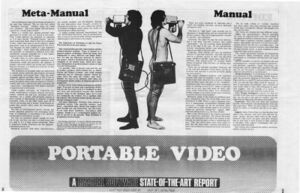
TOWARD THE PORTA PAK[1]
“Striving towards better content on broadcast TV is like building a healthy dinosaur. Better to decentralize the medium and get people into using it as their tool. There just isn't enough time to fool around with changing the broadcast mode of television when decentralized, portable VT systems can and are leapfrogging the old system.”[2]
Video tape, which had been in development for decades before the introduction of the Portapak, emerged from the development of audio tape, sharing a lot of its technological and institutional history. Even before the development of video tape, video cameras were used by the military – early video cameras were used as part of a weapons guidance systems – and were also adopted by the broadcasting industries – there was a pressing need for instantaneous playback of sporting and news events.[3]
The main disadvantages for the development of video tape technologies had been two-fold: the amount of tape the system consumed and the fidelity of the image. To begin with, the amount of tape that fed through the machines was considerable (thirty feet per second in earlier machines)[4] but once the “quadraplex recording” design was adopted[5] the Ampex VR-1000, which became the TV industries machine of choice by the late 1950s, consumed only “fifteen inches of tape per second—or half an inch per frame—fitting ninety minutes of video onto a reel fifteen inches in diameter.” [6] This brought the machine closer to portability, but it was still, by current standards, colossal and inordinately expensive for general use.[7]
The second issue, the question of fidelity of the image, was improved by allocating three functions on a two-inch thick tape. The larger part, running through the centre of the tape, would record the image and the margin at the top of the tape would record the audio, lastly a third track running at the bottom would contain the control data (regulating play back speed &c).[8] This would provide the technological basis for more flexible and portable technologies in the coming decade.[9]

The parallel development of videotape and video-recorders had been taking place in Japan, which in the 1950s had imported the American Ampex VR-1000 systems for use in their own media. The cost and the size of the tape was reduced by Norikazu Sawazaki, who worked for Tokyo Shibaura Denki (Toshiba). His system (1957) wound the tape round a drum in a helix shape (at an angle) making it possible to record the information diagonally. Sawazaki’s system required two tape heads instead of four and reduced the amount of tape needed still further.[10] The Japanese motivation to compete with the American Ampex system was fierce and by 1959 Toshiba, Sony, Matsushita, and the JVC (Victor Company of Japan) all had functioning prototypes of video systems – all of which incorporated a helix system similar to the one Sawazaki had devised. The sticking point for the Japanese companies was that the American firm Ampex held the patent for many of the components,[11] but when Sony developed a transistorised VTR (Video Tape Recorder) Ampex permitted its use for non-broadcast use in exchange for Sony’s transistorized components in Ampex’s equipment.[12]
The next significant stage in the evolutionary graph toward the Portapak is the Sony PV-100 (1961). This helical scanning, transistorised VTR weighed 145 pounds and could be carried by two people. The system could now easily be placed on a boat, train or plane and was used outside of a “mass media” context, for instance as military training equipment and as inflight entertainment on commercial flights.
The Astrovision was a PV-100 built into the bulkhead at the rear of the American Airlines plane’s flight-deck.[13] By 1962 Ampex had developed the VR-1500 system, “small enough to be transported in the trunk of a car.” They suggested it could be used for educational purposes “[…] ideal for transmitting previously recorded educational programs over closed circuit systems and providing instant playback of ‘role playing’ and other classroom activities.”[14]
In 1963 this system was incorporated into the Ampex Signature Home Entertainment System (an elite media package exclusively offered through one department store). This move toward domestic consumption was countered in 1965 by the Sony TCV-2010 Videocorder, which was touted by Sony as “tape yourself TV”. This promise of easy access and personalisation, a closed-circuit system that provided the possibility of real-time engagement and instant playback, bringing us into the realms of self-produced media. Such technologies established a new political and cultural horizon for countercultural initiatives such as The Raindance Corporation and the magazine for “video freeks” Radical Software, but these systems were still beyond the pocket-book of the average American media-artist.
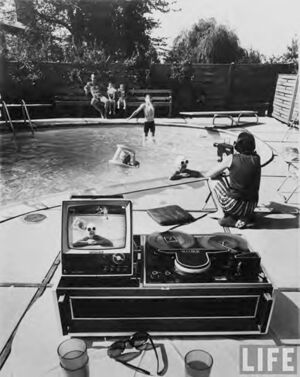
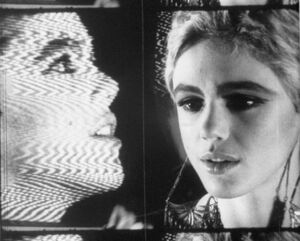
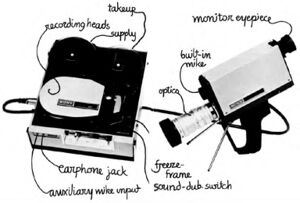
In October 1965 the Korean artist Nam June Paik, with money from the John D. Rockefeller III Fund, bought a Sony TCV-2010 from the Liberty Music Shop in Manhattan. He immediately set to work, filming Pope Paul VI, who was visiting the United Nations, through the window of his taxi. June Paik played the tape at the Café Go Go in Greenwich Village that same night. “[A]s collage technic replaced oil paint, the cathode ray tube will replace the canvas” he declared at the time. This was a few months after Andy Warhol had received the rather more cumbersome Philips EL 3400 (weighing in at 100 pounds) as a promotional gift from the company.
In Warhol’s 1965 film Outer and Inner Space we see Edie Sedgwick talking to her own video image. It is an early recording of the unnerving bodily experience of “telepresence” – whereby the subject apprehends themselves as other and the audience, by extension, is caught in the circuitry of identification. Almost as an artifice of the apparatus, in this early film-video work the element of feedback seeks to destabilise the integrity of the subject. You may remember Lacan’s fantasy of the cybernetic tortoise, where two machines are frozen in apprehension of the self in the other[16] so Sedgwick is caught in a moment of self-apprehension as other – caught in an intersubjective circuit.
This decentering of the self could also be read through the lens of Gregory Bateson. To be removed from ones self and to be at the same time present makes one aware of the different levels of abstraction the self is constructed within. Could the video system which abstracts the real-time self and repositions to outside the body also be seen as a technologically advanced Structural Differential? Hasn't this subjective circuitry (the fabulous loop de loop) been a feature of feedback machines since the Vapour Engine? Isn't this an artefact of any feedback machine, which causes us to question the nature of consciousness and through its presence in the world (as a vapour engine, second-guessing computer or cybernetic pet) challenges our notions of how the self is constituted?
Sony’s battery powered VideoRover DV-2400 followed in 1967. The recording unit now weighed eleven pounds, with the camera weighing five. The system recorded on 20-minute CV video reels. This was the first of the “portapaks” – a generic name for the portable video systems produced by Ampex, Sony, and Philips in the late 60s and early 1970s. The most successful to emerge was the Sony VideoRover II AV-3400 (1970) which recorded on 30 minute tapes and afforded instant playback through the camera itself or through a monitor, it carried a standard format, EIAJ Type I tape which could be used on other brands of machine, and perhaps most importantly, it retailed for $1495.[17]
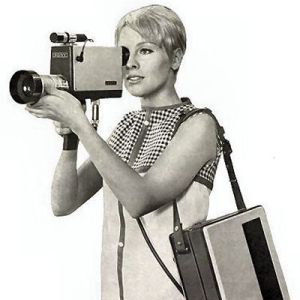
Although variously used as a training tool, an educational aid, in the broadcasting industry, and as a surveillance system in business, portable video equipment was about to find a new application in a cultural artistic revolution which embraced ecology, media, and aesthetics, all refracted within this mirror of subjectivity, the portable video system.
STEWART BRAND – (MEDIA) ECOLOGY
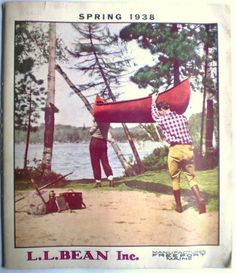
The model for Radical Software – in which Bateson's ecological polemic, Awake, was published (see Steps Towards a (Media) Ecology)– was Stewart Brand’s Whole Earth Catalog, which was founded in 1968. The aim of the Whole Earth Catalog was to provide “access to tools” for the counterculture communities that sprung up in the second half of the 1960s. These communities sought independence from the industrialised world and from organised politics, and the magazine recognised the need to form a network with like-minded people.
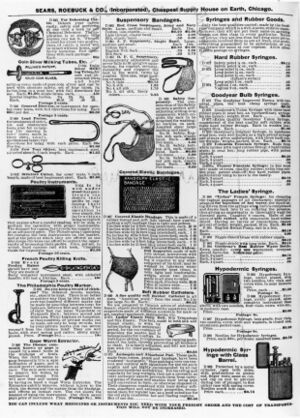
The Whole Earth Catalog provided channels through which self-sustaining systems could flow. Its models were, visually and practically, magazines such as the L.L. Bean Catalog (established in 1917, giving access to information about products from hunting boots to fishing tackle) and the Seers Roebuck and Co. Catalog “the cheapest supply house on Earth” (established 1893). These publications were characterised by a simple description of a product with the minimum of editorialising.[18]

Brand envisioned a “catalog of goods which owed nothing to the supplier and everything to the consumer.” [19] The Whole Earth Catalog contained a list of items and information “where to buy a windmill. Where to get good information on beekeeping. Where to lay your hands on a computer.” [20]
The Whole Earth Catalogue spoke to a new post-war subjectivity, in which alternative, appropriate localised technologies are worked with, “hands-on”. So rather than preach a position, the Whole Earth Catalog presented a complete discourse in which environmentalism, consumerism, individual choice, and technology were bound together. The “progressive” elements of this culture were tempered by a more conservative culture of thrift and ingenuity which encourages self-responsibility and agency, a countercultural translation of the “pioneer spirit”. To some members of the counterculture the American frontier was translated to the frontiers of technology and outer space, as media activists Ant Farm wrote in a 1968 edition of the Whole Earth Catalog:
“YET THERE ARE COWBOY NOMADS TODAY, LIVING IN ANOTHER LIFE STYLE AND WAITING FOR ELECTRONIC MEDIA, THAT EVERYONE KNOWS IS DOING IT, TO BLOW THE MINDS OF THE MIDDLE CLASS AMERICAN SUBERBANITE. WHILE THEY WAIT THE COWBOY NOMADS (OUTLAWS) SMOKE LOCO WEED AROUND ELECTRIC CAMPFIRES”[21]
It was within this context of self-sustaining ecological living, in which – to paraphrase Marshall McLuhan – each technological development represents an extension of human potential, that cybernetic ideas of ecology were built into the structure of the counterculture of the 1960s.[22] In a cybernetic system each element of that system is mediative, the subject can never be outside mediation.
ORGANIC UNITY – APPROPRIATE TECHNOLOGY
Stewart Brand first encountered systems orientated ways of thinking as a biology student at Stanford in the late 1950s. There he was taught by Paul Ehrlich,[23] Ehrlich emphasised how elements within a system are engaged in a constant exchange of information, which affords adaptation by directing the flow of energy within that system. Ehrlich extended this cybernetic reading of biological systems further, for Ehrlich humans had reached a point where they could influence their biological development, meaning that they had reached a point at which cultural engagement in the fields of politics, art, and conservation became important to evolutionary development.[24] Ehrlich's influence on Brand is apparent in Brand's 1958 diary entry: “the responsibility of evolution is on each individual man, as for no other species. Since the business of evolution for man has gone over to the mental and psychological phase, each person may contribute and influence the heritage of the species.”[25]
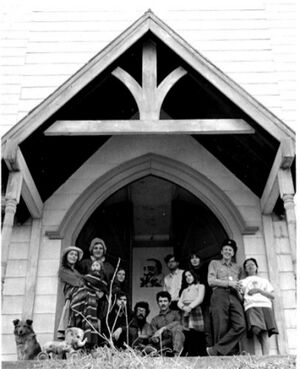
After graduation Brand was drafted into the army and served as an infantryman for two years. Stationed at Fort Dix, New Jersey, Brand spent his weekends visiting his friend, the painter Steve Durkee, in lower Manhattan. Here Brand encountered a group of artists – including musician John Cage, painter Robert Rauschenberg, and performance artist Allan Kaprow– who established a performative practice which blurred the boundaries between art and life. As early as 1952, at Black Mountain College in North Carolina, Cage and Rauschenberg had organised the first “happenings”.[26] In Theatre Piece No. 1 Merce Cunningham danced, M. C. Richards read poetry, and David Tudor played the piano, whilst Cage gave a lecture.[27] They proposed a form of art in which the dividing line between the artist, artwork, and audience is erased.[28]

In 1963 Steve Durkee, with poet Gerd Stern and sound engineer Michael Callahan, established USCO – an artists’ community in an old Methodist church in Garnerville, Upstate New York.[29]
USCO became a testing ground for methods of art-making and communal living. The “systems”, multi-media approach to art involved newly coined rituals (performances) mediated by strobe lights, light projectors, tape decks, stereo speakers, and slide shows, which contributed to the visual repertoire of “psychedelia” (the aesthetic of positive feedback). These media served as technologies of self and technologies of community, along with marijuana and peyote and LSD, which all served as tools of the augmentation of consciousness.
It was at USCO that Brand encountered the works of Norbert Wiener, Marshall McLuhan, and Buckminster Fuller alongside the writings of Indian scholar Ananda K. Coomeraswamy. Coomeraswamy emphasised the traditional role of tribal living and collective craftsmanship which could be observed in many non-occidental societies.[30]
The ecological aesthetic of the counterculture did not involve a rejection of technology but, rather, an acceptance of the technologies of non-western cultures, which served to enhance ecological and communitarian cohesion.[31] It stands outside the modern teleological world and outside the anti-modern (which is itself also a product of modernity). In this sense the counterculture took an approach similar to structural anthropologists – the structures of non-western cultures could be applied to their own experimental culture (cohesion is maintained through the circulation of knowledge through the community). The contemporary media theorist Fred Turner has termed the USCO performances “theatrical ecologies”, they take on board the cybernetic notion that the individual is a part of a larger environment. This striving for social unity was reflected in the titles of USCO’s multimedia pieces: Who R U? and We R All One.[32]
For several years USCO served as a base while Brand travelled back and forth across America visiting sites in which a new communitarian counterculture was emerging. Brand also stayed close to the technological developments within the research cultures of Stanford University and the San Fransisco valley (which would later would become Silicon Valley) and visited the reservations of Native Americans (he founded an organisation called America Needs Indians).[33]
Brand’s early career describes the contours the emerging counterculture: at Stanford he encountered a vision of ecological unity based on cybernetics; in New York, and at the art commune USCO, he encountered a form of “systems art” which was philosophically close to cybernetics from an ecological and technological perspective. Brand went on to encounter at first hand a nascient communitarianism which understood organic unity in cybernetic terms and used cybernetic technologies of self as forms of collective and individual expression.[34]
RESEARCH CULTURES – LSD – ARPANET
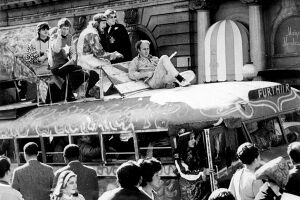
In 1959 the writer Ken Kesey joined the creative writing programme at Stanford University. He took up residence with a community of academic bohemians in Perry Lane, a line of ramshackle cottages close to the Stanford golf course. Vic Loval, a Freudian psychologist also living at Perry Lane, introduced Kesey to the experimental “psychomimetic” drugs programme at Veterans Hospital in Menlo Park (the same institution where Bateson conducted his research into the double-bind). The programme, which paid 75 dollars a day, was covertly funded by the CIA's MKULTRA programme. The programme was the singular most influential means by which LSD (then legal) was popularised amongst the staff and students of elite universities across the country.[35] Kesey also took a job as a night assistant at Malmo psychiatric ward, an experience which provided the basis for his first novel, One Flew Over the Cuckoo’s Nest (1961). [36] Before long Perry Lane became an unofficial centre for experimentation, inviting others to experience LSD, mescaline and peyote. After Perry Lane was condemned for demolition in 1963, Kesey and a dozen like-minded fellows set up their own community in La Honda, California. This became a laboratory for a life augmented by LSD. Around this time Timothy Leary and the League for Spiritual Discovery also released the drug from a controlled, scientific environment into the realm of cultural experimentation, as “avant-garde neuropharmacological researchers”.[37]
Kesey and the group that grew around him, the Merry Pranksters, promoted the drug with missionary zeal, developing a nescient counterculture which would soon become international. They converted an old school bus into a mobile cybernetic sound system; comprising input into the bus via microphones and output via speakers; tape machines would serve as an interface, scrambling, mixing, lagging and playing back. The Pranksters painted the bus in vibrant clashing colours (visual positive feedback), attached a sign on the back reading “weird load” and in 1964 set off from California to New York – with Prankster Mike Hagen filming the odyssey. The overall performative play with technology and ambient sounds was similar to the technologies of tactical media championed by William Burroughs in his 1963 text The Invisible Generation [see previous].
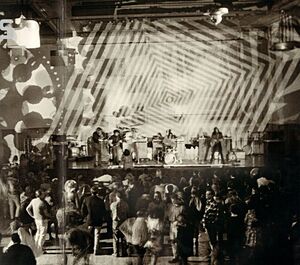
In 1965 Kesey and the Pranksters organised a series of Acid Tests. These were parties devoted to the exploration of LSD, and further experimentation with lights and noise. The Acid Tests took place mostly in the bay area of San Francisco. It was at events like the Acid Tests that the aesthetic of immersion developed: “mixed media” installations that incorporated light and movie projections, strobes, tapes, rock'n'roll and black light; all amplifying visual and auditory feedback. Alongside LSD, these media worked as a technological ensemble which wrapped around the individual and the community.
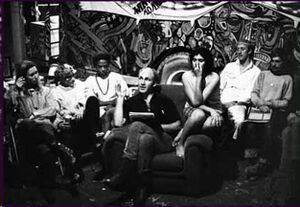
In 1966 the Acid Tests upscaled to the three-day long Trips Festival, at the Longshoreman's Hall in San Fransisco. The organisers included Kesey and the Pranksters along with Stewart Brand and members of the artists’ commune USCO. The event featured the most developed immersive light show that had been seen to date; the 6000 visitors were offered punch laced with LSD and listened to music by live bands including The Grateful Dead and Big Brother and the Holding Company.[38] This event would later be interpreted as the counterculture’s introduction into mainstream cultural life, this “gathering of the tribes” indicated a cultural shift had taken place in the younger generation of (mostly white, middle class) Americans which was developing a different value system and a different aesthetic to previous generations.
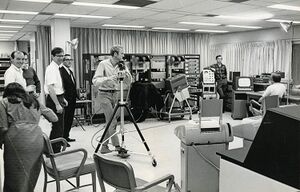
The three technologies I outlined above (1) the “cybernetic bus" (2) the light show and (3) LSD, all serve in an ensemble as technologies of the self, in which the senses are enhanced and extended. The aim of the psychedelic project (in the minds of Kesey, Brand, Leary, et al at least) might be understood as the augmentation of human potential. But this notion of augmentation and extension can also be understood as an artifice of cybernetics per se. Which is why the co-evolution between humans and the technologies that surround them was evident as a concept in the therapies that emerged at the time (see next chapter); the countercultures that emerged at the beginning of the 1960s and also in the research cultures of the Bay Area.
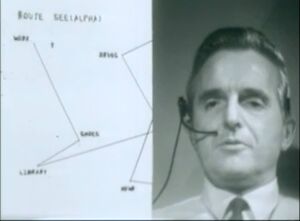
A good example of the protean ground that cybernetic ideas provided can be seen in the Stanford Research Institute's, Augmentation Research Center run by Douglas Engelbart[39] from 1957.[40] The project was situated a short distance from Veterans Hospital where Kesey and others had participated in LSD research programme. At the Augmentation Research Center Engelbart and his team developed elements which would be integral parts of the future personal computer, such as bitmapped screens, the mouse, hypertext, collaborative tools, and early versions of the graphical user interface.[41]
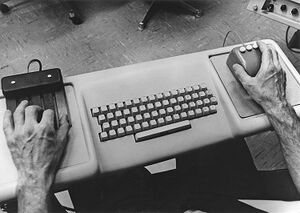
Here again we see a material connection between the work of Gregory Bateson and the emerging counterculture of the 1960s. Members of Engelbart’s research team were also enthusiastic “avant-garde neuropharmacological researchers” which helped inform their attitude to augmentation; Gregory Bateson’s notions of “co-evolution” and “levels of abstraction” were incorporated into Engelbart’s theorisation of the new systems they developed; when Engelbart organised what came to be known as “the mother of all demos” (1968) – in which the key elements of what would be the “personal computer” were shown to the world – Stewart Brand (the organiser of the Trips Festival and founder of the Whole Earth Catalog) was there to record the event.
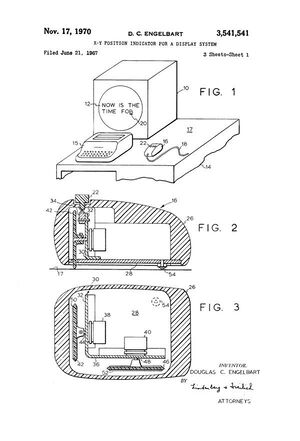
The demo was a multi-media event in itself, with real-time split screens showing Engelbart’s face alongside the code he was typing into the system. We see the cursor (then called the “tracking spot”) crossing the screen; we see the user making drawings; we see real time video links between different computers; we see the keyboard and the mouse demonstrated as an augmentation of human capacities. Engelbart’s colleague, from a remote monitor, explains the code that runs the system (NLS); Engelbart demonstrated how all these elements are co-extensive, and presented the forthcoming ARPANET (the forerunner to the internet) as an augmentation of the human ability to store and share knowledge. Engelbart had been working under contract with ARPA (the Advanced Research Projects Agency) from 1967, to develop NLS (oNLine System), a system to network computer-literate communities, again, serving to augment human intelligence.[42]
All the media through which this was communicated reenforce the notion that the information feedback loop extends organisation into new areas, that this technology is a technology of the self and of the coming community. The performativity that feedback apparatus naturally engender is evident here, as it is in the “neuropharmacological research” of the merry pranksters and the blind improvisations of the cybernetic tortoise.[43]
It was in this culture that Radical Software was born. Within the broader counterculture community, video emerged as a technology of self amongst a repertoire of other technologies that situated the self within a broad media ecology. By the late 1960s it was also evident that the counterculture extended beyond an far enclave of “hippies” and was manifest in multifarious research cultures. [44]
RADICAL SOFTWARE - (MEDIA) ECOLOGY
The Raindance Corporation was established as a platform for media activism, users of new video technology and as a “think tank” – a radical alternative to the RAND Corporation.[45] Radical Software, which became the editorial outlet for Raindance, was founded by Beryl Korot and Phyllis Gershuny in 1970. The magazine began as a survey of individuals and collectives who were using the new technology of video as a way of sharing knowledge and experience.[46]



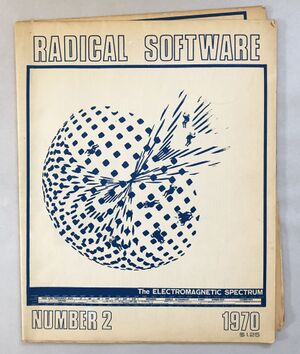
Korot and Gershuny developed this into a forum for the dissemination of information and discussion, as well as a platform for established writers and theorists. The founders and contributors to Radical Software were largely artists working with the new Portapak video system which had been accessible since the end of the 1960s. At the cost of $1495 it was not cheap, but it was in the range of many more users than had previously been the case, and could be easily acquired by collectives. Tapes were easy to distribute, and could be re-used and copied. The second technological revolution came in the form of cable (CATV - Community Access Television). Ralph Lee Smith’s article The Wired Nation (1970) heralded a new media revolution which would accord access to the contact of “newspapers, mail service, banking and shopping facilities, data from libraries and other storage centres, school curricula and other forms of information too numerous to specify. In short, every home and office will contain a communications centre of a breadth and flexibility to influence every aspect of private and community life.”[47]
The artists Frank Gillette and Ira Schnider, in the first issue of Radical Software (1970), recognised that the combination of cable hooked up to portable video equipment would break the ecology of the mass media, radically changing the subject positions of producers and consumers of media.[48] CATV, like CCTV (Closed-circuit television), was a closed circuit system extended to a very great extent allowing for a feedback loop of communication between participants over great distances.[49] The recursive structure of this system could take the form of shared communication and could equally create positive feedback (noise). Both feedback as noise and negative feedback as a system of control offered political and artistic potential which the community around Radical Software were keen to exploit.
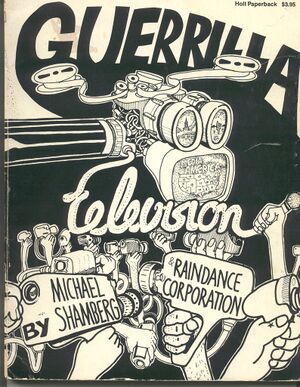
Raindance and Michael Shemberg’s publication Guerrilla Television (with graphics by architect-design collective Antfarm) (1971) would identify mainstream ‘Media America’ as designed to minimise such feedback, allowing only a one-way flow between sender and receiver. This resulted in an accumulation of cultural power into the hands of corporate America. Portable video systems, along with access to cable technology, would help redress this imbalance. A principle platform in the pages of Radical Software, therefore, was to lobby for the open uses of CATV (the appointment of licences began in 1970). Between 1968 and 1972 cable operators offered support to community based projects, this was exploited by a wave of artist-activist initiatives and underwritten by New York State Council for the Arts (which in 1970 increased its budget for the arts from $2m to $20m), and support from private foundations. The emphasis and motivation of the community of video artists working for and around Radical Software was on community based media projects and ecological activist projects (the annual Earth Day began in 1970).[50] Paul Ryan had worked for Marshall McLuhan whilst McLuhan was visiting professor at Fordam University (1967-1968), where he gave Ryan and Gillette access to Sony Portapaks and tape he had received from Sony.[51]

Ryan and Gillette, along with their colleague Roy Skodnick would become key architects in the discourse of video-art-activism as it emerged from the ecological movement. They produced seminal works, texts, and forums for theory and practice (often through the offices of Raindance and Radical Software). Radical software combined pragmatic advice of how to work the technology with an emergent theoretical framework which considered the implications of that technology on future culture and society.[52] Ryan was inspired by McLuhan at his most optimistic, who in Understanding Media: The Extensions of Man(1964) had posited that electronic media could result in “the ultimate harmony of all being”,[53] this, in Radical Software was tempered with a politically critical approach which advocated “Cybernetic Guerrilla Warfare”[54] which challenged the “top down” monopolies of Media America.
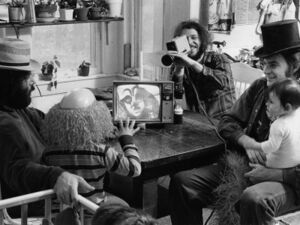
If the Portapak as a piece of technology encouraged a radical new form of social-media and media collectivity, it also allowed for the creation of artworks which made the individual's place within a media circuitry visible. Paul Ryan’s Everyman’s Mobius Strip (1969) was a video confessional, a private feedback booth, where one could record oneself going through a series of simple exercises and view the playback privately before the tape was erased; Frank Gillette and Ira Scheider’s Wipe Cycle (1968), a grid of nine monitors displaying broadcast images, prerecorded tapes and timed tape-delay images of the audience in front of the monitors;[55] and Dan Graham’s TV Camera/ Monitor Performance (1971); Frank Gillette’s, Video: Process and Meta-Process (1973). These works differed from the video work that immediately preceded them. In 1968, an exhibition called The Medium is the Medium showed a series of commissioned video works by Alan Kaprow, Otto Piene, Aldo Tambellini, James Seawright, Nam June Paik, and Thomas Tadlock. These works were by and large “process based”, manipulating the signal to change what plays on the surface of the screen, in that they extended the properties of the medium, which were of a technical standard that was “broadcastable”. Here, as Paik had predicted, the cathode tube became the canvas and paint, and the viewer remained firmly situated on one side of the TV screen. The work of Ryan, Gillette, Scheider, and Graham were, by contrast, “systemic”[56] These works could not exist without the presence and participation of the viewers, which produced a performative potential that had not previously existed. It was at such moments that the immersive aesthetic of the counterculture and the feedback technologies of portable video systems presented new horizons of possibility, which were both aesthetic and social.
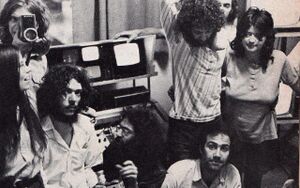
As Roy Skodnick was to reflect years later, social movements and media movements were converging.
“[…] with Bateson as principle guide to the complexities of nature and culture. [Frank] Gillette did it, Randy Sherman did it, and apparently [Dan] Graham did it too. Anyone who happened to get hold of a portable video system at the time immediately overloaded on circuits, playback, feedback and fabulous loop de loop.”[57]
The Porta Pak, Skodnick observed, was a “beautiful system” that not only allowed the user to “ track social behaviour but also to see how social behaviour is framed […] TV dissolved into a more plastic language.” Skodnick continues, “ [T]here was a full-bore media war of information then, and visual information was fully up for grabs. We could put ourselves in it, see ourselves seeing ourselves, and even enter the jouster with the ‘News cycle’ emptying out, as was demonstrated in [Gillette’s] Wipe Cycle.” Such was the “radical ecology of Radical Software”. [58] Paul Ryan: “Video itself mutated from a counter cultural gesture to an art genre. When video was principally a countercultural gesture, it held the promise of social change unmediated by the art world. Now, whatever promise of social change video holds is mediated by the art world. This is a significant difference. People unfamiliar with the mutation find it difficult to appreciate the unlimited sense of possibility that early video held.”[59]
During the 1960s and 1970s, European media critique grounded in Marxism tended to emphasize the alienation engendered by the mass media (the distance between the viewer and the shining world of the commodity).[60] In the United States, by contrast, a network of activists, architects, artists and critics experimented with a different understanding of the medium of TV. Freed from the stranglehold of the networks and accessed by the people, TV could become a technology that could ‘make’ reality. Groups like Ant Farm, Raindance, Radical Software and Videofreex (versed in the cybernetic lore of Norbert Wiener and Marshall McLuhan) tested the possibilities of a medium that would indeed produce a participating network, which would collapse the difference between performer and producer.[61]
FLEXIBILITY–ECOLOGY
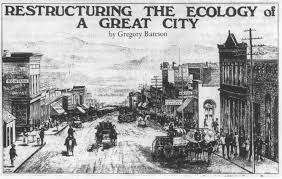
It was in this milieu that Bateson's ideas made their transition from the sphere of ecology into media art. For Bateson, in the realms of anthropology, psychiatry, ecology and aesthetics the self-reflexive subject is central, the medial subject who recognises their place within a hierarchy of abstraction. The progression from Behaviour, Teleology & Purpose, the McCulloch-Pitts model, Norbert Wiener’s negentropy and, Ashby’s Homeostat to the emerging ecology movement and its abiding connection to media ecology can be found in Bateson's 1968 essays Effects of Conscious Purpose and Human Adaptation [62] (discussed in Steps Towards a (Media) Ecology) and Restructuring the Ecology of a Great City[63].(discussed below). In these texts Bateson returns to the beginning of the fabulous loop de loop, and to the evolutionary models that had excited Samual Butler's imagination a century before, to the 'vapour engine' which, even on this side of the fabulous loop de loop, serves again as a model for evolution.
The question for Bateson in Restructuring the Ecology of a Great City – written for the office of New York City Mayor John Lindsy and published in the fourth issue of Radical Software –[64] is how to conserve and protect flexibility, which is a measure of the degree of adaptability within the parameters of a given system. Bateson begins the essay by establishing that the exploitation of resources over thousands of years by humans has resulted in a reduction of such flexibility. Human society has been progressively unstable since the introduction of the wheel, metal and script. Indeed the 'pathologies of our time' are an accumulation of a loss of flexibility over a very long period. The ideal city is considered as "a single system or environment with 'high' civilization" in which the flexibility of the civilization and of the environment are equal. The designation 'High' corresponds to the degree of self-knowledge or 'wisdom' of a given society, this is passed down by individuals through institutions (schools, family, church for instance).
Bateson shifts between actual and hypothetical societies; and also actual-hypothetical past and present societies, positing an ideal, ecological society which primarily uses that energy which is available to Spaceship Earth, principally solar, wind, photosynthesis and tidal energy.
To illustrate the ecological city, and the more general issue of flexibility within a system, Bateson again returns to W. Ross Ashby's Homeostat. In Ashby's model, and Bateson's city, flexibility operates within set parameters, the upper and lower limits of which are strained when tested, resulting in a loss of flexibility throughout that system. Bateson uses the practical (whilst somehow generally hypothetical) example of over-population, which exacts strains on housing, transportation systems and education if tested to the limit, resulting in the city becoming less self-sustainable, less flexible, less ecologically responsive. Bateson advocates the control of ecological resources and seeks to establish authority to preserve the flexibility that does exist (and to allow for instances for it to exist where it currently does not). This, Bateson argues, may justify 'tyrannical' measures.
Bateson advocates a radical humility on the part of humankind, warning that in seeking to have control of a given system one destroys it. The aim is to find one's place within an ecology, which requires a large philosophical AND spiritual leap in the first instance. Bateson has little faith in the current economic and political system – the Viet-Nam war is a folly, the pollution of the environment by corporations is reprehensible, overpopulation and the pollution of ecological systems by DDT indicate that it may be 'too late'. The interventions he makes – speaking on behalf of the Ecology Bill in Hawaii, and the debate on the future city in New York, for example – call for long term changes of individual and collective philosophy, reform where possible (Hawaii) and anti-democratic legislation if necessary (New York). The stakes are high, the very survival of Spaceship Earth.
For Bateson "cybernetics is [...] not simply a change in attitude, but even a change in the understanding of what an attitude is."[65] This introduces the political subject as transcendent: In later writings Bateson would consider that liberal reason requires a self-reflexivity which would allow a profound change in subjectivity. As with Bateson’s consideration of then human psyche or the social unit, there is always a paradox at the centre. For the subject to see themselves beyond the screen of consciousness is not possible, because the the screen of consciousness is the interface between the map of the self and the territory of the self. To know one’s place within system requires a transcendent self-reflexivity. The double bind would be that this transcendent self-reflexivity would be simultaneously a revelation of the self and a negation of the self. To think on the register of the total mind would allow one to see beyond the screen of consciousness and to recognize one’s place in the system. The ecological subject would transcend subjectivity, coming into being at the moment of its dissolution.
Bateson’s cybernetic epistemology necessitates a self-reflective understanding of the individual’s place within a larger system. The (second order) cybernetic approach to negentropy holds that human + environment are part of a single system. Humans are in the position to operate on a “deteuro-level” and order their environment (given that this is to a limited degree given that the universe is, in the long run, entropic). Humans, through making choices, order their environment – an aesthetic position. Humans’ failour to understand their place in the overall system can lead to disastrous environmental consequences, as a sub-system seeks to preserve aspects within itself which run contrary to the order of the greater system – an ecological position.
We also considered that the tendency to self-reflexivity is an artifice of the method described above. In the preceding chapters I have described a number of machines which solicit this self-reflexivity. The last of these machines, the Porta Pak, becomes a technology of self and a technology of collectivity. [66]
COUNTERCULTURE – BATESON
In truth, the counterculture and Gregory Bateson did not know what to make of each other.
There were clear points of agreement and significant points of difference. Bateson thought the emphasis of LSD as an agent of enhanced consciousness was trivial. [67]He had little time for modish countercultural concepts such as “consciousness II”, as promoted by Charles A. Reich, the writer of The Greening of America (which understood the development of consciousness in crude terms of progressive evolution).[68] Nor did Bateson approve of the re-hashed transcendent theory of the Noosphere, which had originally been formulated by Teilhard de Chardin. In the the 1920s de Chardin had proposed a planetary evolution of consciousness through different stages: from the formation of the Geosphere, followed by the evolution of the Biosphere, and on to the Noosphere which is a cogitative layer of the Earth. The Noosphere is a transitional state between non-reflective life and the Omega point. The Omega point represents a point of transcendence beyond space and time.[69] The theory of the noosphere reinforced a hierarchy of being in which human cognition was at the top, which Bateson opposed, just as he opposed any revisiting of Bergson’s creative evolution, which also put the thinking human at the “top” of the evolutionary tree, and understood evolution in distinctly energetic terms (see < Vibrations).
Bateson had little time for the mysticism and anti-intellectualism of much of the counterculture. Although, through his friendship with Alan Watts, Bateson took an interest in Zen Buddhism as the model for a non-occidental, radically discentered, non-Cartesian philosophy [70] His taste for art was non-modern, he looked toward the poetics of William Blake as the exemplar of artistic sensibility, rather than the video art made by those who championed his writing in the late 1960s and early 1970s. Despite these ambivalences, Bateson found a new audience for his ideas within the countercultural, which had a taste for non-hierarchical, bottom up, structures; which was a culture of networked forms of social organisation; which was open to spontaneous, playful forms of experiment in art and life. The counterculture had also been informed by cybernetic ideas from the very beginning. Buckminster Fuller and Marshall McLuhan exercised a direct influence, whilst Bateson’s ideas were sometimes introduced indirectly (McLuhan, for instance, cited Communication, the Social Matrix of Psychiatry as important in the development of his media theory). Within the counterculture there were more direct influencers, such as Paul Ryan and Frank Gillette (and Radical Software), and a little later, Stewart Brand (and the Co-evolutionary Quarterly). These individuals were among those who served as Bateson’s disciples actively applying and promoting his ideas and publishing his work, along with influential voices in the United States like John Lilly, who opened up new research opportunities.
Up until the publication of Steps to and Ecology of Mind (1971), Bateson’s work was scattered and hard to come by. His emergence within the counterculture in the late 1960 and early 1970s was due to the endorsement of those who came into contact with his work in the 1950s and early 1960s from the fields of the social sciences and the humanities. [71]
In the same way that Bateson, in the 1950s, had been able to make alliances with forms of psychiatric practice which supported a less individual-centric approach to the dominant doctrine of Freudianism, in the 1960s Bateson was able to make an alliance with those who opposed a top-down, command-and-control, bureaucratic world-view. As the ecological crisis became more apparent at the end of the 1960s the counterculture offered Bateson a more sympathetic ear, understanding Bateson when he wrote: “The creature that wins against its environment destroys itself.”[72]
- ↑ This section of the text is an annotation of Peter Sachs Collopy's text. I function here more as an editor than a writer. For a more thorough and precise reading see: Peter Sachs Collopy, The Revolution Will Be Videotaped: Making a Technology of Consciousness in the Long 1960s. University of Pennsylvania, 2015. p50-93
- ↑ – Michael Shamberg, Radical Software issue 1,1970 p.16
- ↑ Peter Sachs Collopy, The Revolution Will Be Videotaped: Making a Technology of Consciousness in the Long 1960s. University of Pennsylvania, 2015. p50
- ↑ Peter Sachs Collopy, The Revolution Will Be Videotaped: Making a Technology of Consciousness in the Long 1960s University of Pennsylvania, 2015. p74
- ↑ (which mounted four heads on a drum which scanned the two inches-wide tape as well as its length,
- ↑ Peter Sachs Collopy, The Revolution Will Be Videotaped: Making a Technology of Consciousness in the Long 1960s. University of Pennsylvania, 2015. p75
- ↑ Peter Sachs Collopy:“[The Ampex] VR-1000, for example, weighed 1465 pounds and cost $45,000 in 1956”. Peter Sachs Collopy, The Revolution Will Be Videotaped: Making a Technology of Consciousness in the Long 1960s. University of Pennsylvania, 2015. p77
- ↑ Peter Sachs Collopy, The Revolution Will Be Videotaped: Making a Technology of Consciousness in the Long 1960s. p56
- ↑ Peter Sachs Collopy, “Ampex trademarked the word Videotape and sold recorders ‘to all major telecasting networks, and to many network-affiliate and independent TV station in the U.S. and several foreign countries,’ including Canada, Japan, England, and Germany by 1958 and another 23 by 1961” Peter Sachs Collopy, Peter Sachs Collopy, The Revolution Will Be Videotaped: Making a Technology of Consciousness in the Long 1960s. University of Pennsylvania, 2015. Sachs Collopy Cites: Ampex, 1958 Annual Report, box 16, series 2, Ampex Corporation Records, pp. 9, 26; Ampex Corporation, 1961 Annual Report, box 16, series 2, Ampex Corporation Records, p. 13
- ↑ Peter Sachs Collopy, The Revolution Will Be Videotaped: Making a Technology of Consciousness in the Long 1960s. University of Pennsylvania, 2015 p79
- ↑ Peter Sachs Collopy, The Revolution Will Be Videotaped: Making a Technology of Consciousness in the Long 1960s. University of Pennsylvania, 2015 p 80
- ↑ Peter Sachs Collopy, The Revolution Will Be Videotaped: Making a Technology of Consciousness in the Long 1960s. University of Pennsylvania, 2015 p 81
- ↑ Peter Sachs Collopy, The Revolution Will Be Videotaped: Making a Technology of Consciousness in the Long 1960s. University of Pennsylvania, 2015 p 83
- ↑ Ampex, 1963 Annual Report, 7.In Peter Sachs Collopy, The Revolution Will Be Videotaped: Making a Technology of Consciousness in the Long 1960s. University of Pennsylvania, 2015 p.84
- ↑ Peter Sachs Collopy, The Revolution Will Be Videotaped: Making a Technology of Consciousness in the Long 1960s. University of Pennsylvania, 2015 p.84 (By now the system used the half-inch CV [consumer video] format which used the hexical scan and the “frame rate” was reduced through a “skip field” function.)
- ↑ See chapter – The Tortoise and Homeostasis
- ↑ Peter Sachs Collopy, The Revolution Will Be Videotaped: Making a Technology of Consciousness in the Long 1960s. University of Pennsylvania, 2015 p93
- ↑ Having said that, the politics of many of the contributors tended toward a libertarian distrust of big government [Andrew G. Kirk Counterculture Green: The Whole Earth Catalog and American Environmentalism; University Press Kansas, 2007, p 21] and the contrast between the New left, (which fought for institutional reform) and the counterculture (which advocated individualism and a withdrawal from institutional politics) is substantial. See alsoFred Turner From Counterculture to Cyberculture
- ↑ Brand in Andrew G. Kirk Counterculture Green: The Whole Earth Catalog and American Environmentalism; University Press Kansas, 2007, p1
- ↑ J. Baldwin The Essential Whole Earth Catalog | cited in Andrew G. Kirk: Counterculture Green: The Whole Earth Catalog and American Environmentalism; University Press Kansas, 2007, p 21
- ↑ Ant Farm, Whole Earth Catalog, July Suppliment 1968
- ↑ Understanding Media | McLuhan's medium theory was influenced by Bateson's Communication and the Matrix of Psychiatry and Wiener's Cybernetics
- ↑ who described biological systems as “a complex energy-matter nexus.” Paul Ehrlich and Richard Holm, Process of Evolution, viii, 1963, 19. This statement reflects the degree to which cybernetics and information theory had influenced the teaching of biology by the end of the 1950s. Ehrlich later became famous for his book The Population Bomb (1968) which warned against ecological disaster as a result of over-population
- ↑ Fred Turner From Counterculture to Cyberculture p44
- ↑ Fred Turner From Counterculture to Cyberculture p45
- ↑ A term coined in 1958 by Allan Kaprow
- ↑ Note:Kaprow and Cage had both studied at the New School for Social Research, where Bateson was amongst the staff.
- ↑ In such instances sensitivity is amplified by mediative technologies which alter the consciousness of the participants.
- ↑ USCO stands for US Company, punning on the corporate, national and colligate senses of “company”
- ↑ Counterculture to Cyberculture
- ↑ This is a mode which Pickering terms "non-modern" (Cybernetics and the Mangle: Ashby, Beer and Pask. Social Studies of Science Volume: 32 Issue 3, 2002: pp. 413-437
- ↑ Fred Turner From Counterculture to Cyberculture p.51; Note: In this culture technologies of self were accompanied by an interest in mysticism which opposed the uniformity found in culture of the “company man” in the West, which mirrored by the uniformity of the communist party member of the Soviet Block.
- ↑ Bootstrapping, Engelbart
- ↑ Counterculture Green; Counterculture to Cyberculture
- ↑ John Marks, The Search for the "Manchurian Candidate" The CIA and Mind Control, The Secret History of Behavioural Science, Penguin, 1979| Marks writes: “The National Institutes of Mental Health had an interest in LSD's relationship to mental illness, but CIA officials wanted to know how the drug affected normal people, not sick ones. Only the military services, essentially for the same reasons as the CIA, were willing to sink much money into LSD, and the Agency men were not about to defer to them. They chose instead to take the lead—in effect to create a whole new field of research.” p 59;See also David H. Prince Cold War Anthropology, the CIA, the Pentagon and the Growth of Dual Use Anthropology, Duke University Press, 2016
- ↑ Tom Wolfe The Electric Kool-aid Acid Test, Picador, 1968. Note: Ken Kesey’s second Novel Sometimes a Great Notion was a tribute to rugged individualism, it had a strike-breaker as the hero and union men as the bad guys – an indication that the Counterculture of the 1960s had a very different political DNA to the New Left;
- ↑ A term used by Tom Wolfe in Acid Test, 1968
- ↑ Wolfe
- ↑ (1925 –2013)
- ↑ Advanced Research Projects Agency (ARPA) became the Defense Advanced Research Projects Agency (DARPA)
- ↑ See Douglas Engelbart profile: https://dl.acm.org/profile/81100342853
- ↑ Katie Hafner and Matthew Lyon, Where Wizards Stay Up Late (The Origins Of The Internet) Touchstone 1996, p. 50
- ↑ For a comprehensive survey of this research culture see: Bootstrapping; The “mother of all demos can be seen here: https://invention.si.edu/mother-all-demos ; see also Fred Turner From Counterculture to Cyberculture; John Markoff, What the Dormouse Said: How the 60s Counterculture Shaped the Personal Computer.
- ↑ Art was understood to be a part of life, and central to this new conception was a recognition of the self’s relation to a wider context. This new artistic vision, which binds together, cybernetics, ecology and self-reflexivity can be traced back to the Macy conferences on cybernetics. The rise of the artistic-communitarian project USCO was part of a broader debate which developed throughout the 1950s, when self-reflexivity and technological extension became increasingly important elements. This was a debate which Gregory Bateson was central to, as we will now see.
- ↑ The Research ANd Development arm of the industrial, military, academic complex)
- ↑ All past issues are archived here https://www.radicalsoftware.org/e/index.html
- ↑ Lee Smith, in Joselit's Feedback, Television Against Democracy, MIT, 2007 p91
- ↑ Radical Software, Issue 1. 1970
- ↑ David Joselit's Feedback, Television Against Democracy, MIT, 2007 pp 96-97
- ↑ David Joselit Feedback, Television Against Democracy, MIT, 2007 p98
- ↑ P. Ryan; A Genealogy of Video; Leonardo, Vol. 21, No. 1, 1988, pp. 39-44
- ↑ Paul Ryan, Radical Software issue 4, 1971.
- ↑ McLuhanUnderstanding Media
- ↑ Paul Ryan, Radical Software Issue 4
- ↑ Paul Ryan, A Genealogy of Video. Leonardo, Vol. 21, No. 1 MIT 1988, pp. 39-44. Note: Both were shown in the exhibition TV as a Creative Medium at the Wise Gallery, NY, 1969
- ↑ The terms “process based” and “systemic” were subsequently used by Paul Ryan in A Genealogy of Video. Leonardo, Vol. 21, No. 1 MIT 1988, pp. 39-44.
- ↑ Skodnick: Radical Software and the Legacy of Gregory Bateson Author(s): Paul Ryan and Roy Skodnick; Art Journal, Vol. 68, No. 1 (SPRING 2009), 113
- ↑ Roy Skodnick, Radical Software and the Legacy of Gregory Bateson Author(s): Paul Ryan and Roy Skodnick: Art Journal, Vol. 68, No. 1 (SPRING 2009),113
- ↑ Paul Ryan, A Genealogy of Video. Leonardo, Vol. 21, No. 1 MIT 1988, pp. 39-44.
- ↑ From the works of the Situationist International and the media critique of Baudrillard
- ↑ What could not be easily foreseen was how the feedback loop of TV could make the commodity and the commodity-performer the same thing. It is in the feedback loop of reality TV shows that the contestant and the prize find their equivalence. It is here that the figure and ground that defined the old mass media are replaced by a constant oscillation between producer and consumer.
- ↑ Bateson,StEM 446
- ↑ Bateson StEM 494
- ↑ Bateson Restructuring the Ecology of a Great City, Radical Software no 4 1971
- ↑ Bateson STEM, page?
- ↑ It was in the period of Radical Software that art became about self-reflexivity In the first instance it was not intended to be art in any conventional sense (no declarable art products were produced), it was rather an extension and expression of lives lived, an augmentation of potential. In this sense it was a negation of art which has been at the heart of the discourse of art since the birth of modernism, but it nevertheless provided a new condition that art recognised its own self-reflexivity – self-reflexivity was thereafter a condition of artistic production.
- ↑ See: Double Bind’s Double Life. Bateson speaking after taking LSD: “This stuff is all very well. It’s very pretty, but it’s trivial.” Harries-Jones, Upside-Down Worlds p.93 –.
- ↑ Charles A. Reich The Greening of America, Random House, 1970
- ↑ See: George S. Levit, The Biosphere and the Noosphere Theories Of V.I. Vernadsky And P. Teilhard De Chardin: A Methodological Essay
- ↑ Heims, Steve J.: Gregory Bateson and the Mathematicians: From Interdisciplinary Interaction To Societal Functions, Journal of the History of the Behavioral Sciences 13 ; 1977, 141-159
- ↑ see Lipset, Gregory Bateson The Legacy of a Scientist; and Peter Harries-Jones, 'Upside-Down World, p.9'; Peter Harries-Jones A Recursive Vision p.30
- ↑ Gregory Bateson Radical Software Issue 5 Volume 1, 33 3Bateson StEM. p.87